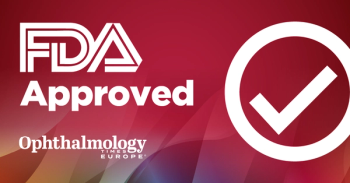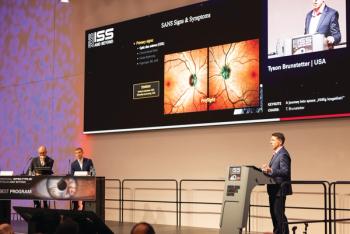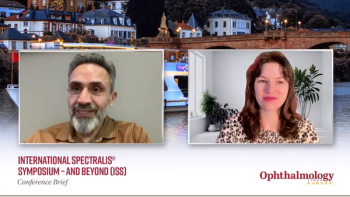
Keratoconus approach is promising
Non-incisional treatment preserves the biomechanical integrity of the cornea
The early results from a clinical study of a non-incisional procedure (Keraflex KXL, Avedro) are encouraging and indicate that the approach produces substantial corneal flattening and improves visual outcomes in patients with keratoconus. Dr Peter Hersh, reported these initial results at the 5th International Congress of Corneal Cross Linking for Keratoconus.
"Keraflex KXL is a promising new technology to decrease the protruding cone of keratoconus and make the irregular corneal optics smoother," said Dr Hersh, director, Cornea and Laser Eye Institute–Hersh Vision Group, Teaneck, New Jersey, and clinical professor of ophthalmology and chief, Cornea and Refractive Surgery, UMDNJ–New Jersey Medical School, Newark. "Our early experience shows improvements in the keratoconic cornea that we have not seen with past technologies.
"This should help improve vision in patients with keratoconus, as well as improve their ability to wear contact lens and improve their vision with glasses," he added. "The hope is that Keraflex can help eliminate the need for corneal transplantation in many patients who otherwise might have no other alternative."
Two-step procedure
The procedure involves two steps, according to Dr Hersh. Step 1 is annular application of controlled microwave energy. The applications, 3.5–5 mm in diameter, were designed to flatten the cornea. Step 2 is focal-patterned collagen cross-linking.
The hope is that the two processes have a synergistic flattening effect via both thermal and photopolymerization biomechanical modalities. Furthermore, the adjunctive cross-linking procedure is designed to improve both the stability of the procedural effect and the underlying keratoconus itself. Since laboratory studies suggest that the procedure may increase corneal rigidity, the combined procedure may enhance this strengthening effect to help mitigate the natural progression of the keratoconic process.
All procedures were performed using the Avedro Vedera Vision Correction System. The device delivers a single low-energy microwave pulse lasting less than 1 second to the targeted area. This application increases the temperature and results in formation of an annulus of collagen contracture. The change in the refractive error depends on the size of the lesion, he said.
Seven patients with keratoconus participated in the first phase of the trial. Dr Hersh reported significant corneal flattening and improved corneal smoothness and regularity in all patients.
In one of several representative case reports, a 33-year-old patient had a preoperative manifest refraction of –1.50 –4 × 140, a spherical equivalent of –2.5 D, and a K steep of 53.25. One month postoperatively, respective values were +1.50, +1.5 D, and 45.75. These results showed a change in spherical equivalent of 4 D and in the K steep of –7.5 D.
In an 18-year-old patient, the preoperative manifest refraction was –3.25 –2.50 × 180, the spherical equivalent was –4.75 D, and the K steep was 50.25. One month postoperatively, the values were +2.50 –0.50 × 180, +2.25 D, and 40.25. These improvements represented changes of +7 D and –10 D.
Among the seven patients in the study, the mean change in the spherical equivalent was 4.39 D (range, +0.5 to +10.125 D), and the mean change in the K steep was –6 D (range –0.50 to –10.125 D).
Dr Hersh said the data are very early and the study included very few patients. Clinical trials of the procedure are underway. The procedure also is being used in a clinical trial to treat patients with myopia.
"Keraflex is a promising new modality to correct keratoconus that may provide synergy between two complementary biomechanical treatment modalities," he concluded. "[Although] the results are preliminary, we look forward to further studies and analysis of the treatment."
Newsletter
Get the essential updates shaping the future of pharma manufacturing and compliance—subscribe today to Pharmaceutical Technology and never miss a breakthrough.















































